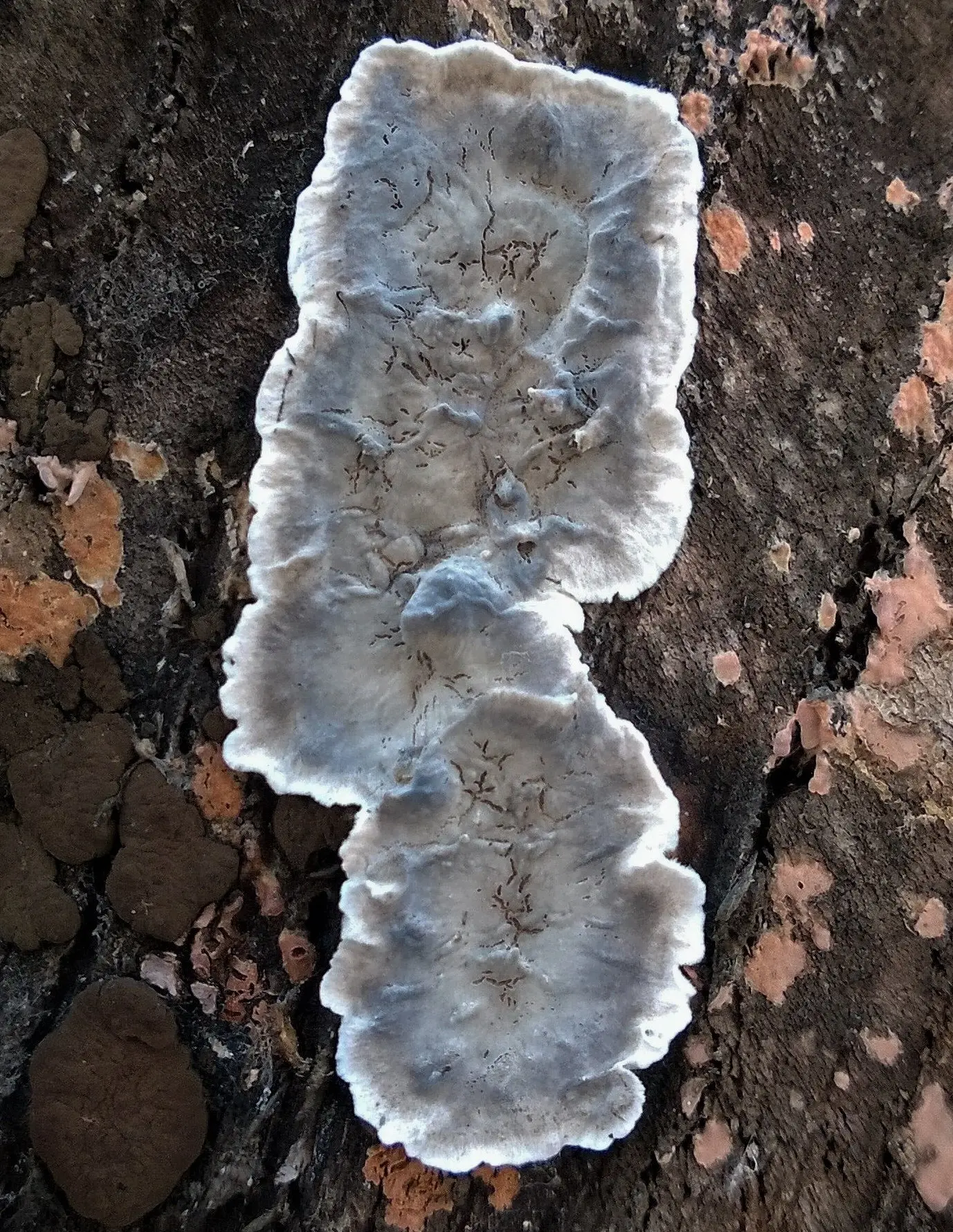Common Kretschmaria (Kretzschmaria deusta)
- Department: Ascomycota (Ascomycetes)
- Subdivision: Pezizomycotina (Pezizomycotins)
- Class: Sordariomycetes (Sordariomycetes)
- Subclass: Xylariomycetidae (Xylariomycetes)
- Order: Xylariales (Xylariae)
- Family: Xylariaceae (Xylariaceae)
- Genus: Kretzschmaria (Krechmaria)
- Type: Kretzschmaria deusta (Common Kretzschmaria)
:
- Tinder fungus fragile
- Ustulina deusta
- A common stove
- The sphere was destroyed
- Ash sphere
- Lycoperdon ash
- Hypoxylon ustulatum
- They don’t have a deusta
- Discosphaera deusta
- Stromatosphaeria deusta
- Hypoxylon deustum

Krechmaria vulgaris may be known by its obsolete name “Ustulina vulgaris”.
Fruiting bodies appear in spring. They are soft, prostrate, rounded or lobed, can be very irregular in shape, with sagging and folds, from 4 to 10 cm in diameter and 3-10 mm thick, often merging (then the entire conglomerate can reach 50 cm in length), with a smooth surface, first white, then gray with a white edge. This is the asexual stage. As they mature, the fruiting bodies become bumpy, hard, black, with a rough surface, on which the raised tops of the perithecia, immersed in a whitish tissue, stand out. They are quite easily separated from the substrate. Dead fruiting bodies are coal-black throughout their thickness and fragile.
Spore powder is black-lilac.
The specific name “deusta” comes from the appearance of old fruiting bodies – black, as if burnt. This is where one of the English names for this mushroom comes from – carbon cushion, which translates as “charcoal cushion”.
Period of active growth from spring to autumn, in a mild climate all year round.
A common species in the temperate zone of the Northern Hemisphere. It settles on living deciduous trees, on the bark, most often at the very roots, less often on trunks and branches. It continues to grow even after the death of the tree, on fallen trees and logs, thus being an optional parasite. Causes soft rot of wood, and destroys it very quickly. Often, black lines can be seen on the saw cut of an infected tree.
Mushroom inedible.









